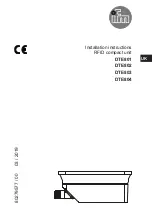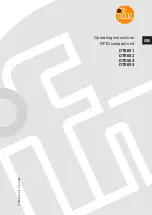
8 of 30
9 of 30
2.4
Display
The
screen
shows
various
menus
,
dialogues
and
displays
as
described
below
.
There
are
basically
six
types
of
screen
:
Ÿ
Standby
(
clock
)
Ÿ
Splash
(
mode
)
Ÿ
Now
playing
Ÿ
Dialogue
Ÿ
Error
/
Information
Ÿ
Menu
When
text
is
too
long
to
fit
on
the
screen
,
it
is
first
shown
truncated
,
then
after
a
few seconds
,
slowly
scrolls
so
that
you
can
read
it
all
.
The
Standby
screen
shows
the
time, date
and
any
active
alarm
times
.
As
you
cycle
through
the
play
modes
using
SOURCE
,
M
3
shows
a
splash
screen for
each
mode
.
After
one
second
,
M
3
enters
the
selected
mode
and
tries
to
start playing
the
last
station
or
track
that
was
playing
in
that
mode
.
If
this
is
not
possible
,
M
3
tries
to
connect
to
the
selected
source
by
scanning
for
stations
,
or
prompting
for user
input
as
appropriate
.
Now
playing
screens
show
information
about
the
audio
source
and
track
now
playing
,
where
available
.
Dialogue
screens
are
shown
to
allow
the
user
to
change
settings
.
Error
/
Information
screens
give
specific
messages
for
a
few
seconds
,
then
change automatically
to
another
screen
.
Menus
M
3
has
basically
three
types
of
menu
.
Use
the
Select
control
to
step
through
and select
options
.
A
scroll
bar
on
the
right
of
the
screen
shows
if
there
are
further options
above
or
below
those
visible
.
Each
mode
has
a
Mode
menu
,
with
options
specific
to
that
mode
.
Below for DAB
mode menu as an
example
.
In
addition
,
each
mode
menu
has
two
final
options
:
System
settings
>
and
Main
menu
>.
The
'>'
indicates
options
leading
to
further
menus
.
The
System
settings
menu
allows
access
to
system
settings
and
information
such
as
time
,
language
and
software
update
.
Menus
with
more
options
than
will
fit
on
one
screen
have
a
scroll
bar
to
the
right
.



































